In this tutorial, I will share one of my favorite watercolor techniques: edge-softening. This is useful for most detailed paintings and is especially helpful in creating realistic shadows. I will demonstrate the technique on a flower, but it can be used for any subject. Try this on a practice sheet of paper until you feel comfortable with it before using it on one of your paintings.
The Procedure
You will usually use this technique on an area that already has a layer of paint, as it will simply add shadow or color with a soft transition. I painted the entire flower with a light shade of purple and let it dry. Notice how it looks very flat before shadows are added.

Start with a small brush and a watery paint mixture (I used the same color as I painted the flower, but darker). Paint along the edge that you want the strongest shadow on.
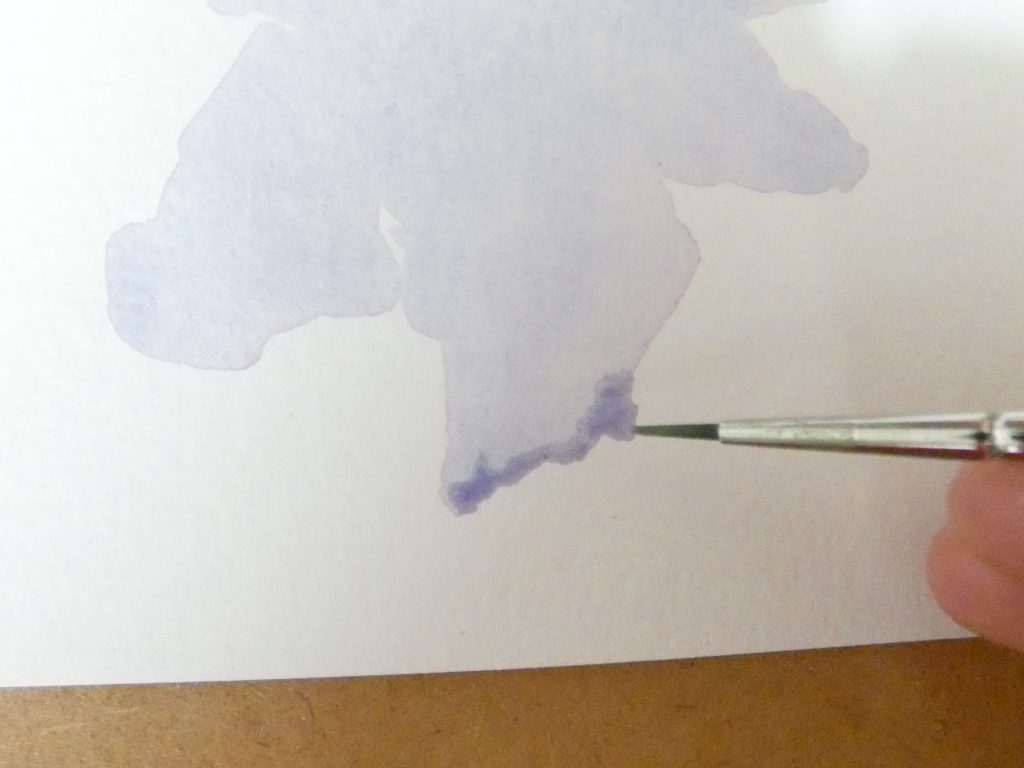
Then, with a second brush (clean and slightly wet), paint along the side of the paint you just put down. Dab the paint away from the edge gently. If you notice that your brush has collected a lot of paint and is simply painting rather than creating a transition, just wipe the brush off on a paper towel and continue (dip it in water and slightly dry it off if necessary).
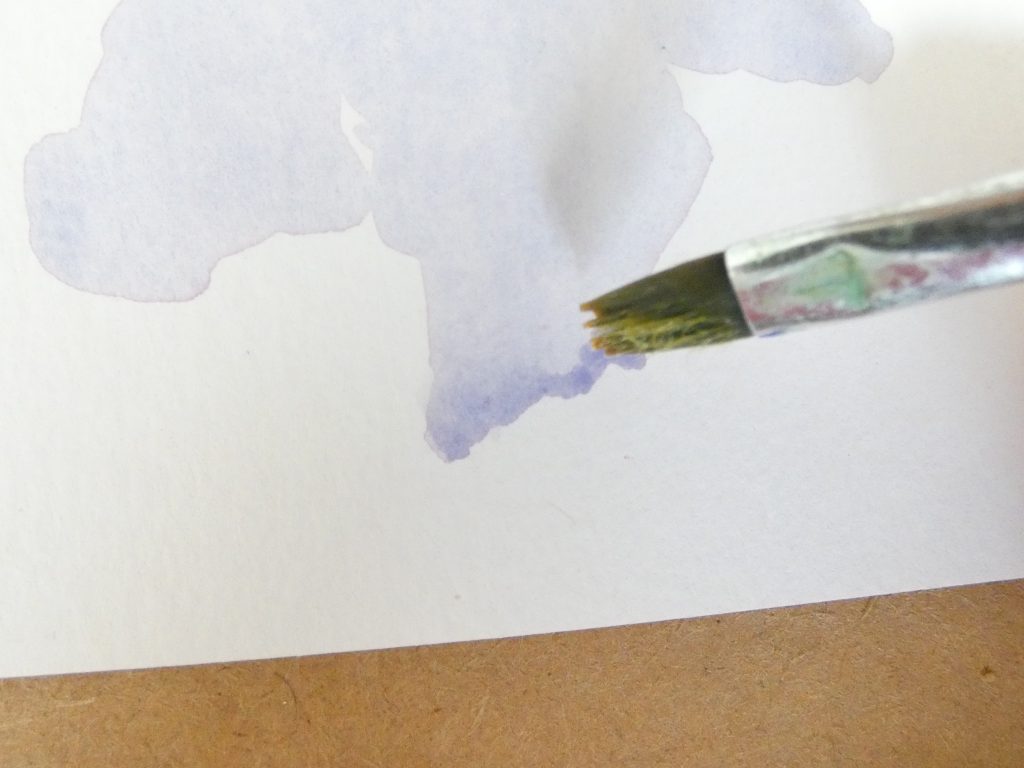
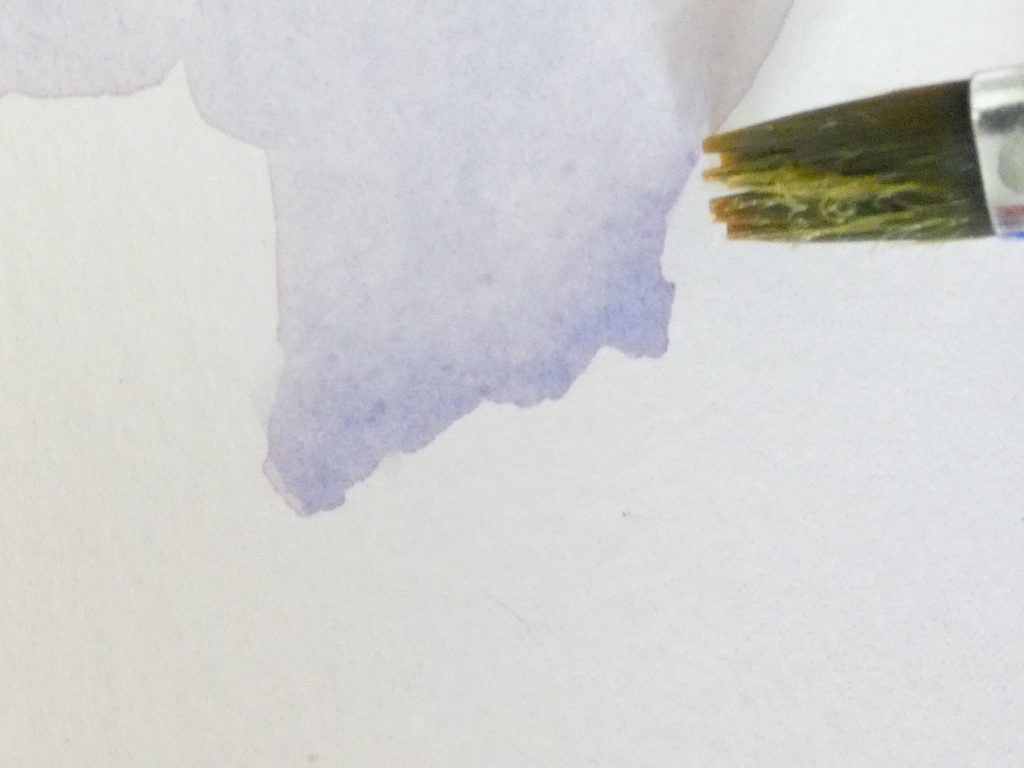
Wait for the paint to dry and repeat.

Continue until the shadow is dark enough.
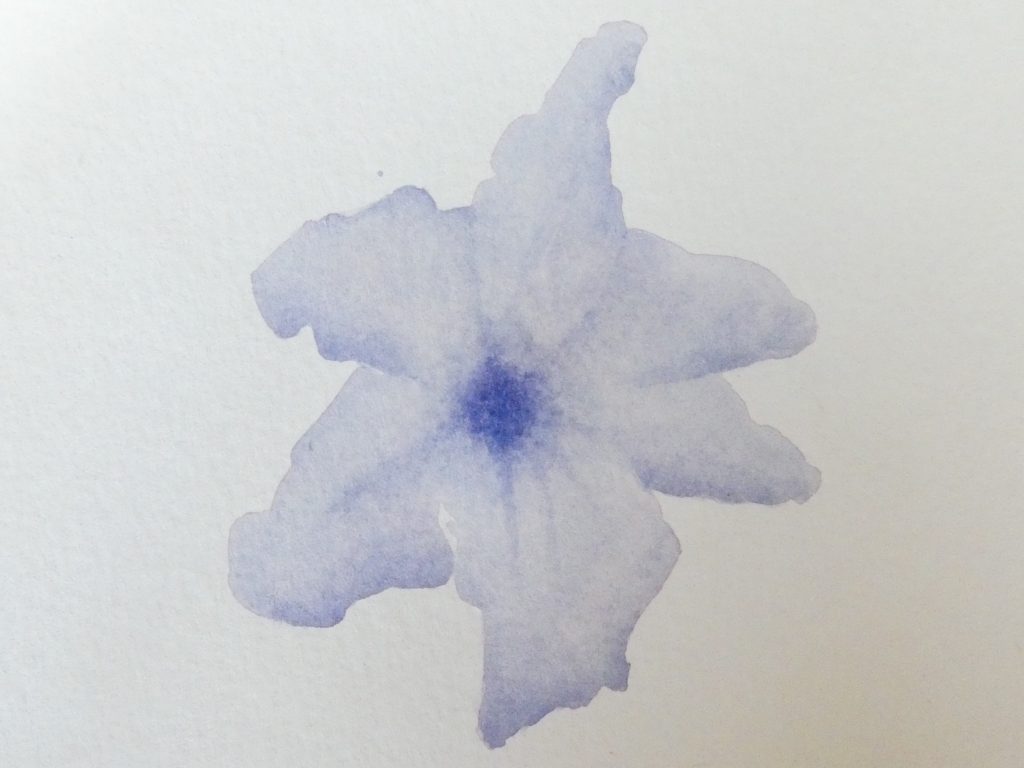
What to Avoid with this Technique:
- Using it before the previous layer is dry. If you add paint and try softening it on a wet layer of paint, your brush will simply lift the previous paint and paint may dry with splotches.
- Waiting too long before softening the edge. The technique requires that you work with wet paint, as dry paint will not gradually spread. If you find your paint drying quickly before you go over it with the second brush, try working in small sections at a time. I usually hold the two paintbrushes in my two hands, so that I can quickly switch over to softening after applying paint.
- Using too much water on the second brush. The brush should be damp, but if it is wet, the water will likely creep into your paint and form blooms, or make it harder to work with. I usually dip my brush in water and then paint a stroke on a paper towel to remove excess water from it.
- Softening everything. Sometimes, hard edges are valuable and should not be softened. Look at your reference photo to know whether a certain edge should be hard or form a gradual transition.
Additional Information
Sometimes you may want to avoid all hard edges, and this technique can be applied. For example, in the center of the flower, I painted a blob of dark purple and softened the edges all around, as shown in the following images.

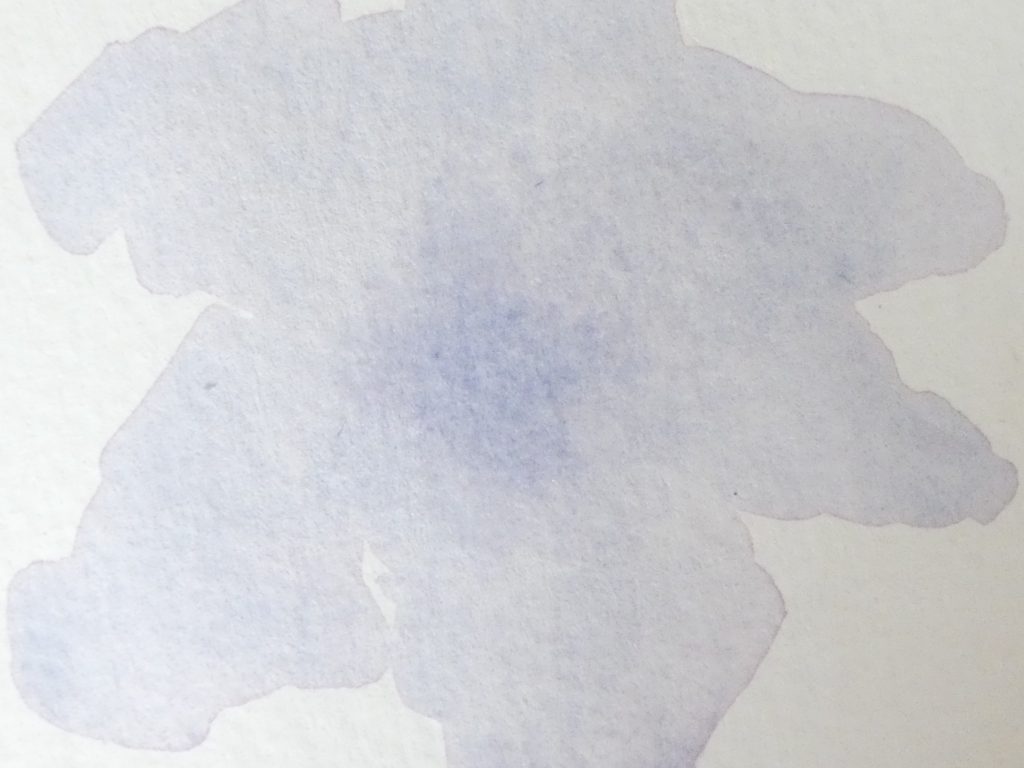
A subtle stroke of shadow with one side softened gives the impression of overlap in petals, feathers, or other layered objects.
This method is very useful for painting hummingbirds’ wings. If you want to practice it, I suggest painting a hummingbird in flight and carefully using the edge softening technique to form the wing feathers.
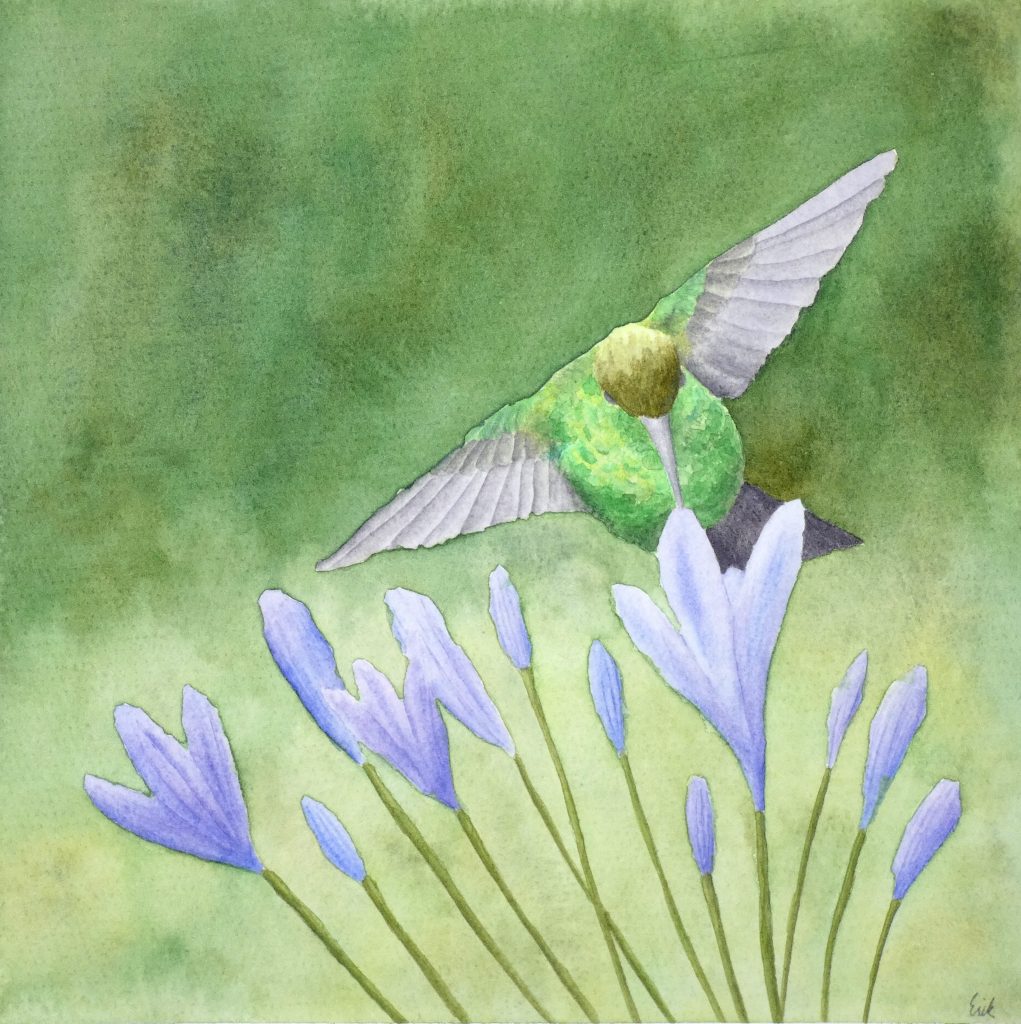


8 comments